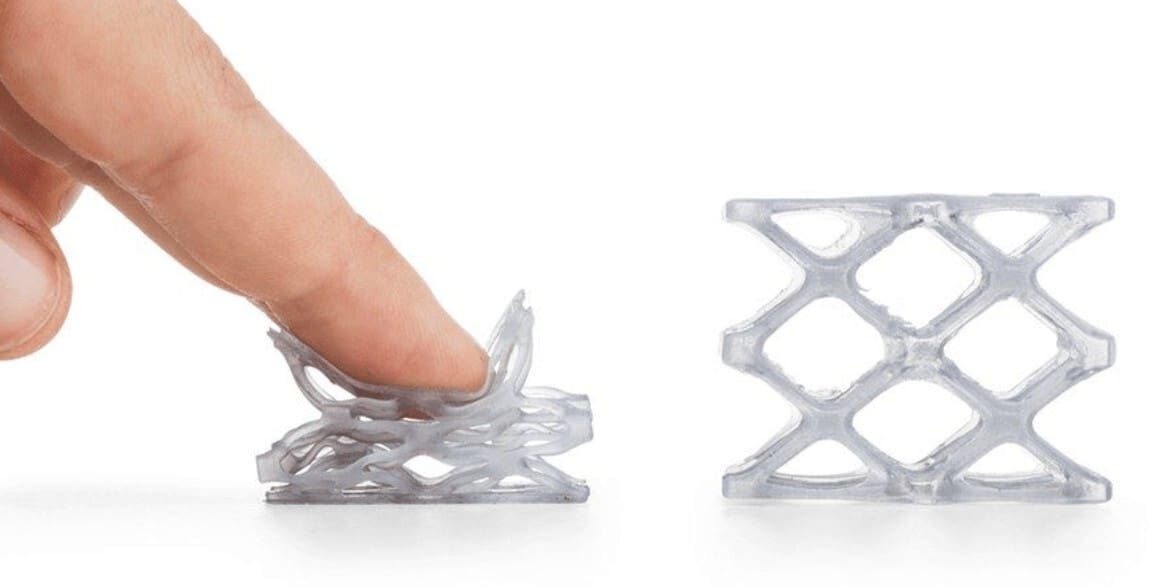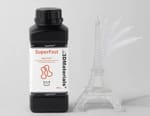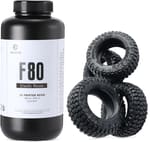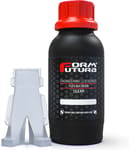Flexible resins are becoming a mainstay in households with resin-based 3D printers. Options for affordable resins have been steadily increasing, with several brands releasing materials that are compatible with most consumer LCD (MSLA) 3D printers for sale today.
While flexible resins can be used to create functional bendable things, an at-home maker has to overcome several hurdles in order to 3D print successfully with these capabilities-increasing materials.
Photopolymer resins in general are tricky to 3D print with, and adding flexibility to the materials means that makers should know the best things to 3D print with them, as well as how to get best results. It’s also helpful to know where to look for models, resin information, and tips that will make the 3D printing process easier.
With all that in mind, here’s all you need to know regarding flexible resins.
The Numbers Behind Flexibility: What Do They Mean?
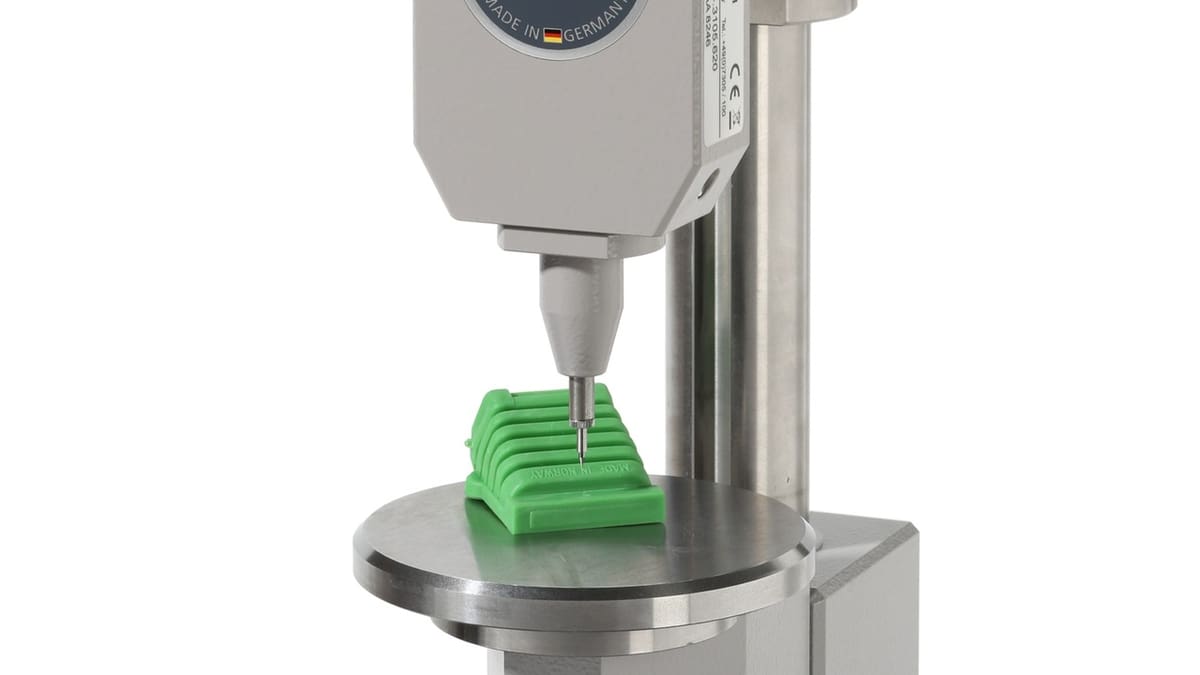
Before buying flexible resin, it’s important to know what properties to look for on the technical datasheet (TDS), which is the manufacturer’s listing of the most important material properties. Most resins will have a TDS that show various aspects, such as the modulus of elasticity or yield strength. For flexible materials, there are a few key properties that are especially relevant when it comes to know just how “malleable” the resins are.
Shore Hardness
Shore hardness, or durometer value, is an object’s ability to resist indentation. Effectively, it’s a measurement of how soft or squishy a resin is going to be once it has been 3D printed and cured. It’s a relative scale, with each Shore hardness measurement corresponding to the firmness of common materials (such as tires or pencil erasers).
Shore hardness measurements gets slightly confusing at times because there are more than three different number scales: Shore 00, Shore A, and Shore D. Shore 00 is typically used to measure softer things, such as gels, whereas Shore D is used to measure tougher ones, like automotive tires and hard plastics. Most 3D printing resins are measured in Shore A or Shore D, and hover between a Shore hardness of 25A (i.e. pencil eraser) to Shore 80A (i.e. shoe heel, also Shore 30D).
This is such an important property in flexible resins that manufacturers like Formlabs often advertise their products as being of a particular Shore hardness. For example, Formlabs’ Elastic 50A resin has its Shore hardness in the name. From this branding, an experienced user would know that Elastic 50A resin is slightly more rigid than a pencil eraser, but less so than a pneumatic tire.
Elongation at Break
Another important flexible property is the “elongation at break”, which is often expressed in a percentage. This measurement is a test of how much the resin can stretch when 3D printed before it breaks or cracks.
To determine the elongation at break of a resin, manufacturers will 3D print a predetermined geometry of their material, and then pull it until it fails (breaks apart) using an uniaxial tester. The amount of stretch at the time of failure is compared to the sample’s original length using a percentage, which is understood as the elongation at break. For example, a test specimen with 100% elongation at break will stretch to twice its original 3D printed length before tearing.
While this isn’t seen as important enough to be thrown into the resin’s title along with the Shore hardness, it’s certainly helpful to know whenever selecting a resin or designing for a flexible 3D print.
Compression Set
A third important flexible-specific property is the resin’s compression set, which is the material’s ability to return to its original shape after a long period of deformation. Think about it like squishing the 3D print underneath the foot of a couch for a day (although the official ASTM method for this is much more precise), and then checking how much of its original shape it has retained after it’s been removed from underneath the couch.
The resin’s compression set property is the least likely of these three listed properties to be found in technical datasheets. However, it can be important when designing functional parts like gaskets, spacers, and other load-bearing 3D prints. If this is what you’re trying to do with a flexible resin, looking into the material’s compression is a good idea.
Applications of Flexible 3D Printing

Flexible resins have seen substantial use with their increasing availability for both industrial and home-based printing.
Significant applications of flexible resins have to do with wearable technology, ergonomics, and fashion. Wedding bands can be made for people who need a ring that doesn’t impede work or pose a safety hazard; similarly, bracelets and other jewelry that needs to stretch over the wrist, ankle, or head are perfect use-cases for flexible resins. Ergonomic devices, such as seals on swimming goggles or bicycle handles, are often 3D printed using flexible resins.
An important note for anything touching human skin for lengthy periods of time: Check the resin for statements on cytotoxicity, and only use resins that are certifiably non-cytotoxic.
On the more technical side of the engineering aisle, flexible resins are also great for making 3D printed gaskets. These excel in applications where 2D gaskets won’t create proper seals, and eliminate the need for costly injection molding. Flexible resins also see substantial use in pneumatics and hydraulics in robotics applications.
Another application has to do with protection of both things and people. Smartphone cases and helmets are increasingly being prototyped and developed with flexible resins. Helmets especially, and other personal protective equipment, are receiving a lot of attention in the 3D printing space because of the advanced capabilities of lattice structures, which allow for similar levels of protection with lighter-weight protective equipment. These lattice structures not only improve functionality; they also have a substantial cool factor. One only needs to look at Adidas’ 4DFWD shoe soles to understand this cool capability.
Examples
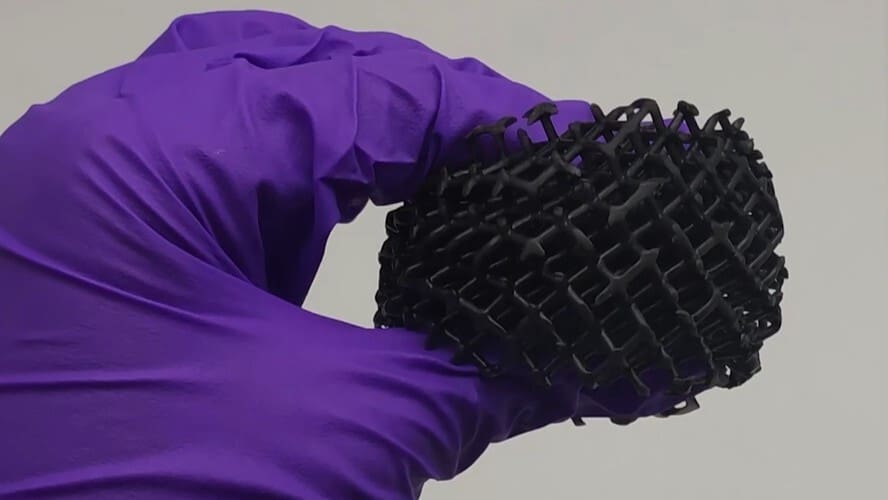
Now that you know what properties to look for when buying flexible resins depending on intended use, let’s look at a few well-known options. Unless you use a closed-source machine like Formlabs‘ Form 3D printers, which require proprietary resins, the ones below will likely work in your LCD 3D printer, as they are designed to be compatible with most standard machines from Anycubic, Elegoo, and Peopoly.
3DMaterials SuperFlex
3DMaterials’ SuperFlex is a good choice for wearables because it is clear and certified non-cytotoxic, so it won’t harm the skin when cured correctly. It’s a pretty hard flexible resin, with a Shore hardness of 80A. Reviews highlight how easy it is to work with and its hardware compatibility, plus the great results that can be achieved.
- Shore hardness: 80A
- Price: ~$60/kg (0.5 kg for ~$30, 5 kg for ~$270)
- Elongation at break: 80%
Resione F80 Rubber-Like Resin
This flexible resin is opaque and made specifically to last at lower temperatures (down to ~10 °C), where other options tend to become brittle. This material is therefore ideal for makers in colder climates who would like to have functional 3D prints in a garage or workshop. Plus, it’s available in two colors (black and pink). That said, both the manufacturer and makers point out that it’s not as beginner-friendly as other brands; still, for some, it’s well worth the effort.
- Shore hardness: 50-60A
- Price: ~$75/kg (black; 500 g pink for ~$60)
- Elongation at break: 59%
FormFutura Engineering Series Flex
The middle ground of this list in terms of Shore hardness, FormFutura’s Engineering Series Flex is – as its name indicates – an engineering-like resin compatible with open-source SLA, LCD, and DLP 3D printers. It has the most flexible characteristics on this list when you combine the Shore hardness and elongation at break. Only available in one color (clear) and one size (500 g), it might not be as convenient for makers who need to print many models, as other brands have a more accessible price tag.
- Shore hardness: 63A
- Price: ~$140/kg (500 g for ~$80)
- Elongation at break: 80%
Formlabs’ Elastic 50A Resin V2 is an option for those with 3D printers from the same brand. The material is clear and has a Shore hardness of 50A, which is quite soft. The company also offers a sturdier, but still flexible, resin with a Shore hardness of 80A.
3D Printing Tips & Tricks
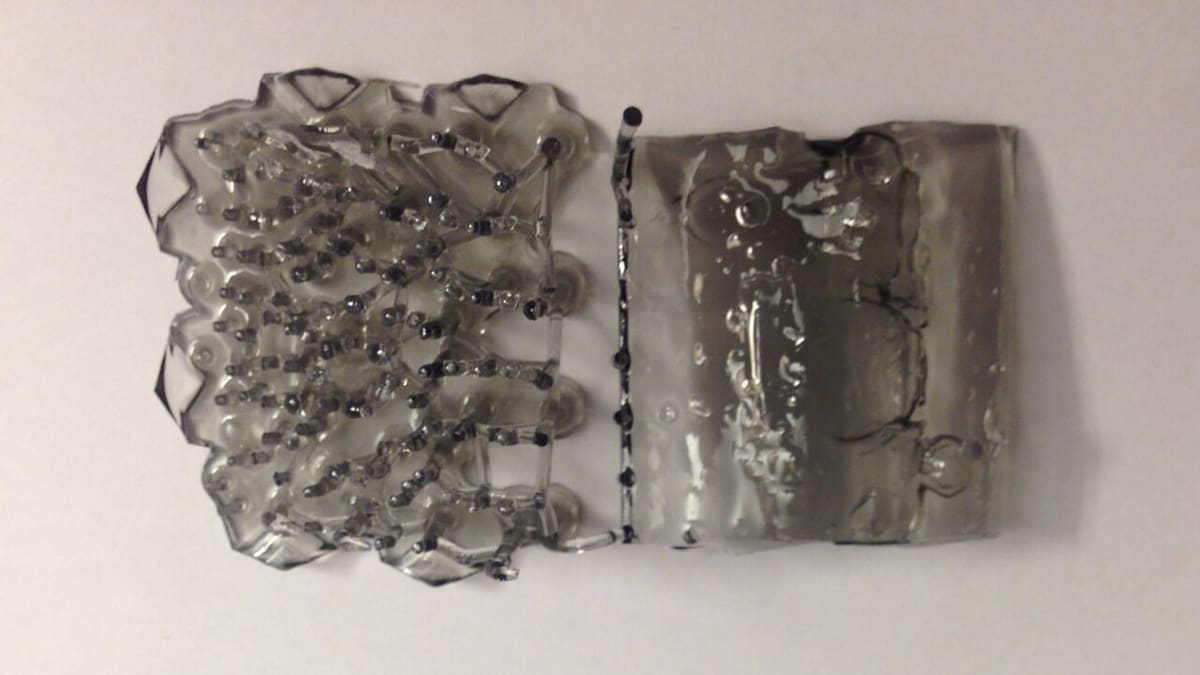
While finding the flexible resin that’s just right for your setup and goals can be a bit of a challenge, it doesn’t stop there. There are a few extra challenges that makers have to overcome in order to produce high quality 3D prints.
Namely, flexible resins require even more supports than standard materials, which already seem to use forests for some 3D prints. Additionally, these support marks are more difficult to remove than on standard resin prints, as they’re torn off rather than snapped off. Think of it as trying to rip just the ear off of a gummy bear using your favorite support-cutting tool. Lastly, thin, filigree-like features are challenging to accomplish due to the high deformation of the object during 3D printing.
Keeping the following things in mind will prevent these potential pitfalls from impacting 3D print quality:
- Minimize the amount of supports being used in the 3D print by laying the model directly on the build plate.
- Increase the touchpoint size of supports to ensure that deformation doesn’t occur locally at these points.
- Long, thin features in the Z-direction can twist around during 3D printing and are likely to come out squiggly; thickening any columns or similar features will help alleviate this problem.
- Clear flexible resins can be colored through various methods, though typically they remain somewhat translucent after this process.
- If you’re planning on 3D printing a gasket, make sure that the resin is compatible with the working fluid using the material’s technical datasheet. The compatibility section can sometimes be found at the bottom of the TDS, although please keep in mind that there is no standard format for this information.
- Flexible resins return to their as-printed shape. If you intend on 3D printing something like a watch strap, it’s best to 3D print it in the curved position instead of laying flat, so that it is easier to wear.
- While flexible resins have similar wash and cure times to standard ones, several (particularly Resione) are much more sensitive to the IPA bath. Check the manufacturer’s recommendations and don’t forget to take the part out of the IPA at the specified time!
- Print-in-place joints using flexible resins can be effectively combined with rigid arms to create a part where bending is allowed but overall stretching of the assembly is limited.
Some Models to Try

Now that you know how to select and 3D print flexible resins, here are some proven malleable-friendly models to try out:
- Stress Ball: This model by JAMakes doubles as a 3D printer torture test, and includes instructions for resin 3D printing. Not only that, but it also showcases the lattice structures made possible by this technology and material.
- Wheel: This design by Strix_3D is a great starter wheel. It can be put on a robot with the right tweaking; if you need to design your own wheel, though, you could always use FreeCAD (which recently dropped its first stable release).
- Phone cases: Why be limited to just one choice of phone case when it’s easy to make several with flexible resin? Check out a list of phone case files sites to try out.
License: The text of "Flexible Resin 3D Printing – All You Need to Know" by All3DP Pro is licensed under a Creative Commons Attribution 4.0 International License.
CERTAIN CONTENT THAT APPEARS ON THIS SITE COMES FROM AMAZON. THIS CONTENT IS PROVIDED ‘AS IS’ AND IS SUBJECT TO CHANGE OR REMOVAL AT ANY TIME.

